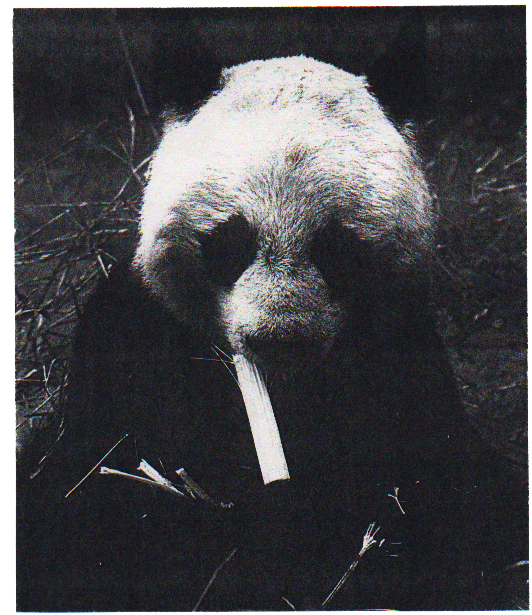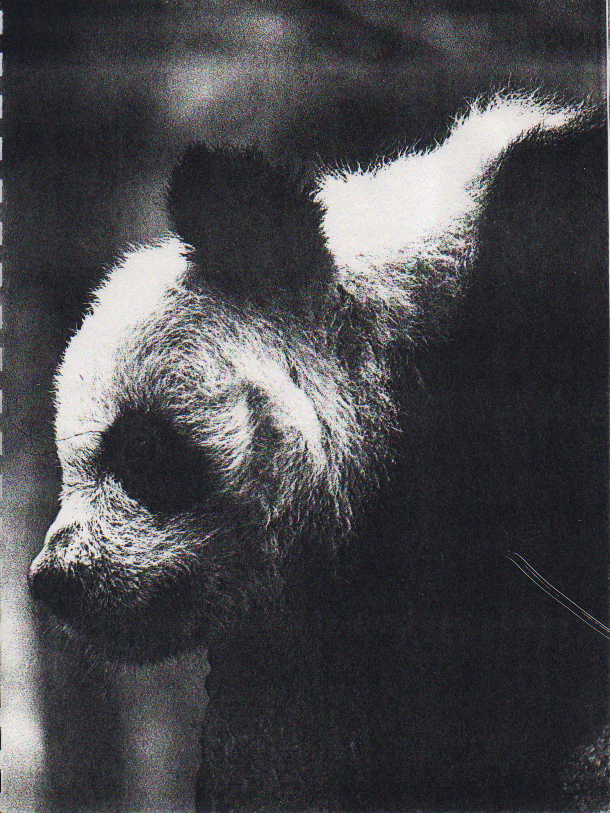 This collection of student work is from Frank Keim's classes. He wants to share these works for others to use as an example of culturally-based curriculum and documentation. These documents have been OCR-scanned and are available for educational use only.
This collection of student work is from Frank Keim's classes. He wants to share these works for others to use as an example of culturally-based curriculum and documentation. These documents have been OCR-scanned and are available for educational use only.Special | A | B | C | D | E | F | G | H | I | J | K | L | M | N | O
P | Q | R | S | T | U | V | W | X | Y | Z | ALL
Panda Bear by Palassa Sergie:
Panda Bear A Panda bear is like the Koala bear but they aren't true bears. Pandas are big with white and black colors. They have black ears, legs, eye patches, feet, chest, and shoulders. Sometimes the tip of the tail is black. Both males and females look alike. They both are 6.25 to 6 feet in length and they weigh up to 200 pounds. But the male weighs 10 to 20 percent more than the female. The Chinese people call the Pandas "Xiongmao," which means "giant catbear." This is because Pandas have vertically split eyes just like cats. All the other bears have round pupils. The Panda also has a sixth finger which is something like an opposable thumb. In reality the thumb is only an enlarged bone which has independent movement. It is very important to the Panda because it helps handle the bamboo stems and leaves that they eat. It has to eat up to 45 pounds of the plant in order to survive each day. Pandas have no heal pad though like the rest of the bears. Pandas have lived in the forests of China since the Pliocene Epoch. They have been around for 12 million years. Long ago they roamed as far north as Beijing and as far south as northern Burma. Pandas live in bamboo thickets that provide them with food and protective cover. They are built short and squat so they can slip right in when they need shelter. The Panda bear doesn't gallop like the rest of the bears. They trot like cats, and after they are done eating they lie around just like cats too. Pandas even climb trees, marking the trees with claw scratches. They don't hibernate like the rest of the bears. They go to lower elevations and continue to feed on bamboo. They don't make winter dens. They sleep in hollow trees or rock crevices only during very bad storms. Wild Pandas are active most of the time looking for bamboo to eat. No one knows how long a Panda may live, but they say they may live up to 30 years. Panda cubs really dislike dogs and leopards. But adult Pandas rarely have enemies other than humans. The Panda's home range is from 1.5 to 2.5 square miles. When adult Pandas are together they make very loud noises. Some noises they make are: chirps, yips, squalls, moans and barks. Pandas mark their territory by urinating on it. They sometimes do it in a weird way, by doing a handstand to get very high. Pandas are found mostly in zoos. There they can do a lot of things they are taught by humans) Iike stunts, riding a bicycle, rolling somersaults, eating with a knife and fork and even dunking a basketball. Palassa Sergie | |
|





